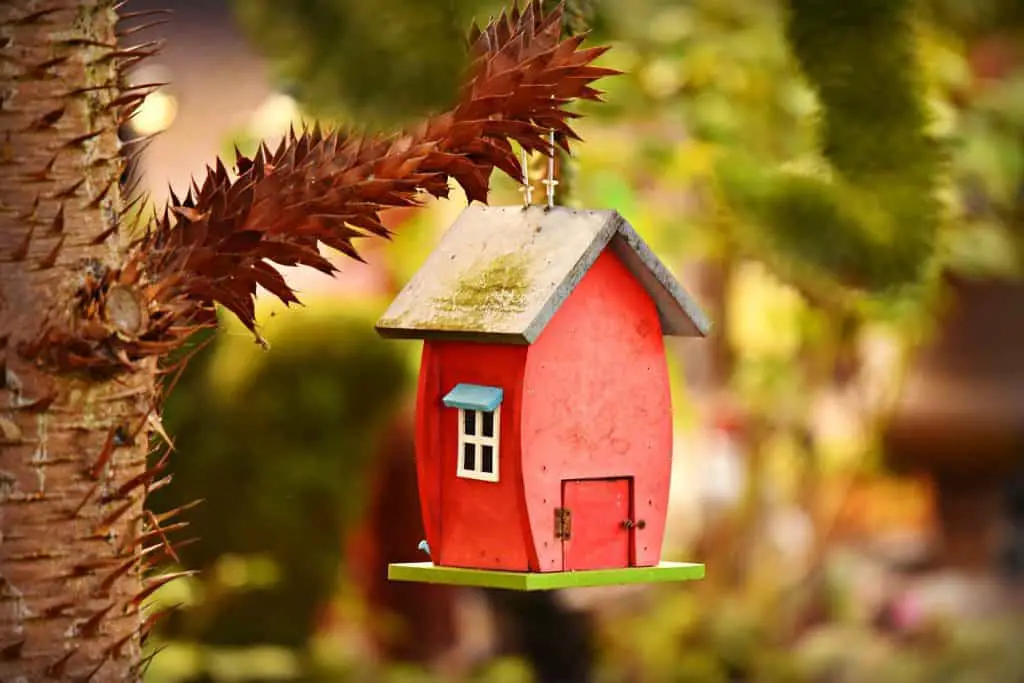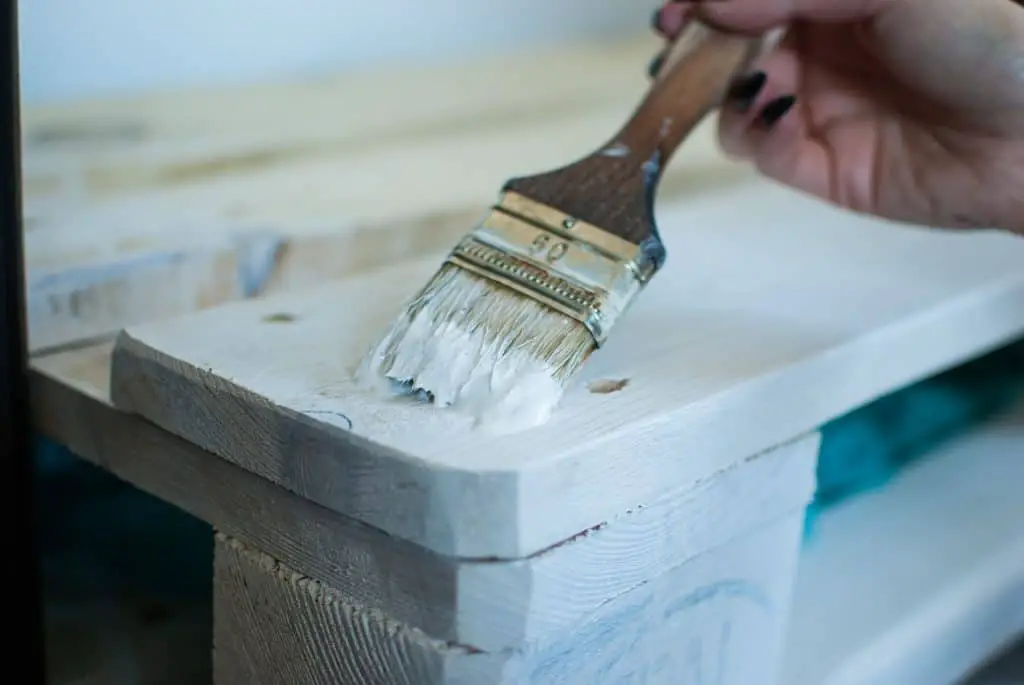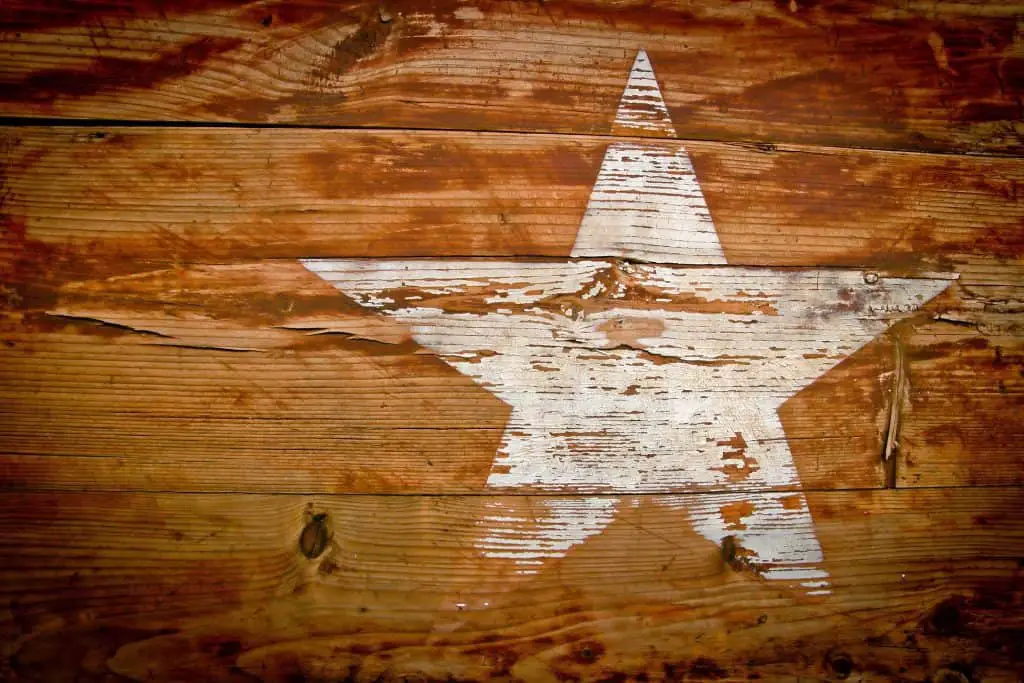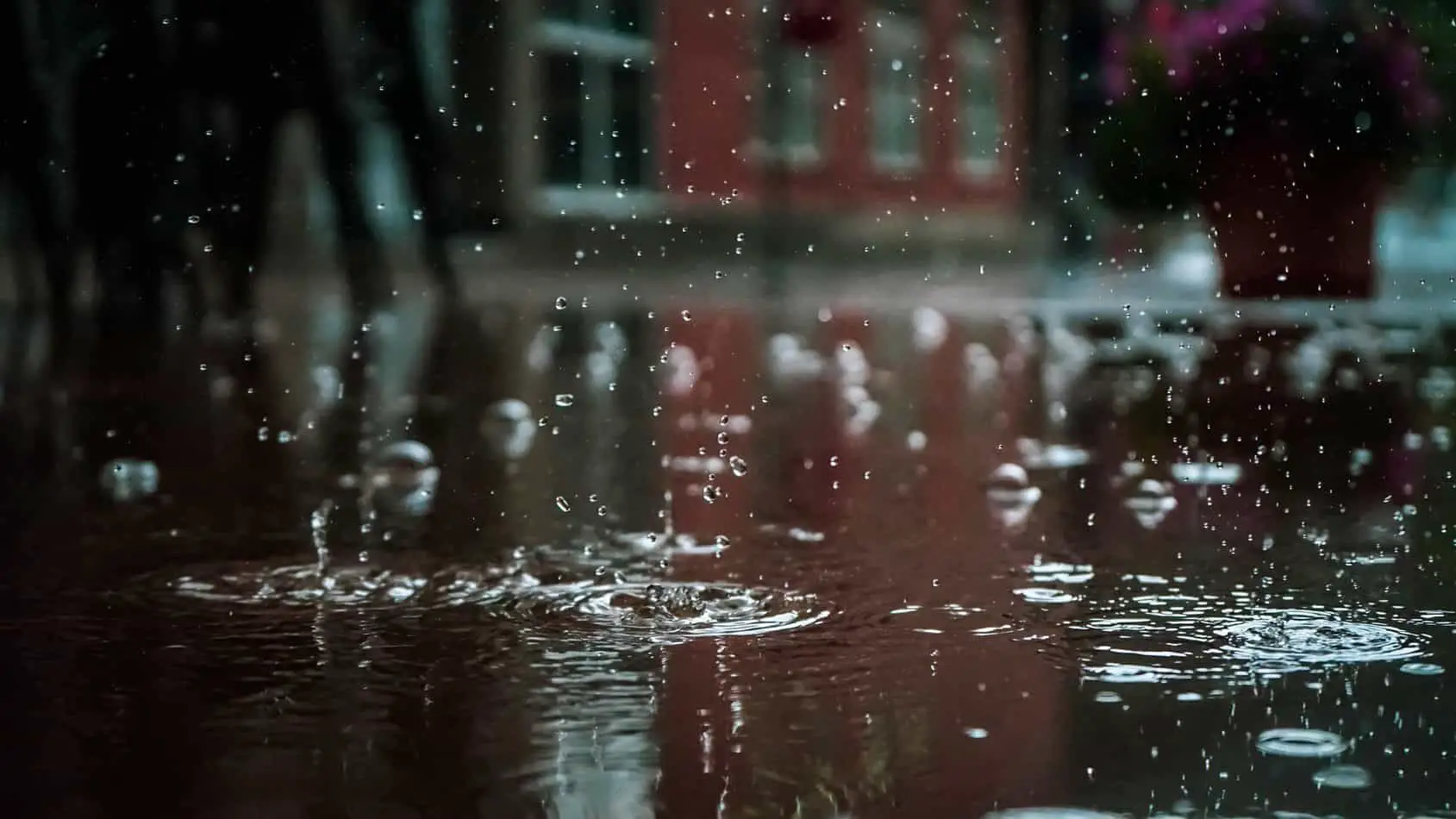Acrylic paints are great for painting on a canvas, wood, and even glass — but do they hold up outside in the rain? Acrylic paint is not inherently waterproof. You’ll need to waterproof your painted object with varnish or gloss.
In other words, if you don’t properly finish your paint project with an outdoor acrylic paint sealer, the paint will wash off when exposed to the elements. While the paint might stick to your painting surface, if it’s exposed to water before it’s completely dry, the paint will wash off.
In this article we will go over how to gloss, seal, and waterproof your acrylic paint project. Alternatively, you can purchase a waterproof acrylic paint. I recommend Fantastory because they offer waterproof acrylic paint. Their paints are very durable, vibrant, and affordable.
Why Does Acrylic Paint Wash Off?
Acrylic paint is pigment mixed in acrylic polymer emulsion. This is just a fancy way to say it is a water-based paint — and because it’s water-based, it can easily wash off if not properly treated and finished.
Acrylic paints dry quickly because they are made of water, which evaporates relatively quickly (especially when you apply extra heat).
In another one of my articles, Does Acrylic Paint Work on Fabric, I talked about painting on fabrics with acrylics and using fabric mediums so the paint will adhere better onto the fabric. This is particularly true if you want to paint shoes or a t-shirt that you’ll wear in the rain.
For your outdoor painting projects, you will also need to gloss and waterproof your project to ensure your hard work doesn’t get ruined or washed away when it rains or snows.

How to Waterproof Acrylic Paint
You’ll need to apply a sealer, such as a varnish, to waterproof acrylic paint.
Even though acrylic paints will dry quickly and are known for being a “strong” paint that will practically stick to anything, if you don’t waterproof it before it’s dry, your hard work could instantly be destroyed from a little rain or small spill.
While acrylics are a tough paint, it’s still good to waterproof your painting. This can be done with a varnish, which is a special type of acrylic gloss.
I recommend this Krylon varnish from Amazon for your outdoor acrylic painted projects. I like this because it comes in a spray can, and it’s easier to apply than a regular painted on varnish. However, for some wood projects, I do like to use the brush-on varnish. Liberty Art makes an awesome brush-on varnish that’s also UV resistant.
Is Outdoor Acrylic Paint Waterproof?
Outdoor acrylic paints are not waterproof — instead they’ll use terms “weather resistant” because they can’t promise a waterproof paint. Using a varnish or finish is one of the only ways to waterproof your project.
However, outdoor acrylic paints have excellent UV protection, meaning the sun won’t destroy your art over time. This is the key difference between outdoor acrylic paint and other options — it’s more resilient to both weather and UV rays. However, it’s no replacement for properly treating your paint project. If you are looking for an outdoor acrylic paint, I recommend Magicfly’s 30 color set.
Why is Varnish Water Resistant?
Varnish is a combination of a drying oil, resin, and a solvent. Varnishes by nature are transparent, hard, and protective, usually having a glossy finish unless a matting or flatting agent is mixed in.
When the varnish dries, the solvent evaporates and creates a transparent film that’s waterproof. Varnish will help protect and enhance the look of your project. There’s another benefit to varnish: Many varnishes are UV resistant and prevent your paint from melting in the sun.

How to Waterproof Your Painting
The process of waterproofing a painting or canvas is very similar to the process I’ve laid out above — by applying a varnish like Krylon, you can protect your painting against water damage.
Apply several coats of varnish or polyurethane to achieve the desired look and feel while protecting your project. You’ll also want to prime the canvas or material you’re painting over if it doesn’t come “pre-primed.”
A primer like Gesso Surface Preparation is particularly popular among painters.
Do I Need Special Tools To Apply The Varnish?
There aren’t any required tools, but a paintbrush that is often cited to be good for applying varnish is a foam poly brush. I personally use this one as well because the foam can soak up the varnish and help apply it evenly on your surface.
Just make sure that you paint even strokes, and don’t rest the brush for too long on a specific area, as this will show through the varnish.
Also, don’t keep your hand on the painting to keep it steady while applying it, as your fingerprints can damage the varnish. Trust me this has happened to me before and I had to re-do it.

After all your hard work painting something, the last thing you probably want is for someone to not notice the fantastic job you did, but rather the fingerprints everywhere.
While no special tools are needed, you do need to have something under your painting when applying the varnish, which if you don’t, could cause damage to that surface.
Will The Varnish Ruin My Brush?
No, not if you clean it properly. Acrylic paint varnishes usually just require you to clean the brush with water and dry it off. However, you might want to keep a separate brush just for varnish. That way the properties of the varnish won’t impact your painting project.
If you decide that using a brush isn’t for you, then a varnish spray is a good choice. However, if you do use a spray varnish, you’ll have to apply a few layers to get a full coat.

Types Of Varnishes For Acrylic Paint
Acrylics do come in different types of varnishes. While gloss is often the go-to varnish, there’s also a matte and satin varnish.
Glossy, matte, and satin finishes have different levels of shine and sheen.
- Glossy is the most shiny
- Satin still has a shine, but it’s more subdued
- Matte finishes have very little shine and are very subdued
People like using matte and satin finishes to hide imperfections, while a glossy waterproof finish will show your project in all its glory (or reveal all the mistakes!).
Really, choosing your varnish simply comes down to your personal preference for shiny things.
FAQs About Waterproof Acrylic Paint
Acrylic paint will wash away in the rain if not properly treated. You’ll want to either use a waterproof paint or use a varnish to seal your paint.
Varnish acts as a protective coat or seal over your finished project. You can either use a spray-on or brush-on varnish depending on your project.
Acrylic paint should last about 5 – 10 years, assuming you’ve properly treated and finished it.
Yes, you can use an interior paint outside, and it can even be durable with the right varnish. But it’s not recommended because interior paint isn’t meant to resist weather, water, UV, and other environmental hazards.
Something To Consider
While you don’t need to prime your acrylic painting surface, it’s often a good idea to do so, especially when working with a varnish. This way the paint not only stays neatly on the surface, but it can also add to the varnish’s shine. Priming can also fix some of the lumpy paint issues painters encounter.
Following the steps and ideas above will not only help you save your piece of art from being damaged by water, but will add an extra shine to your art piece.
I hope you guys found my article helpful, and now have some tips on waterproofing your acrylic paint projects. Don’t forget to check out my other painting guides for tips and answers to all your acrylic painting questions.
Happy Painting!
This article was updated March 16th, 2021.

